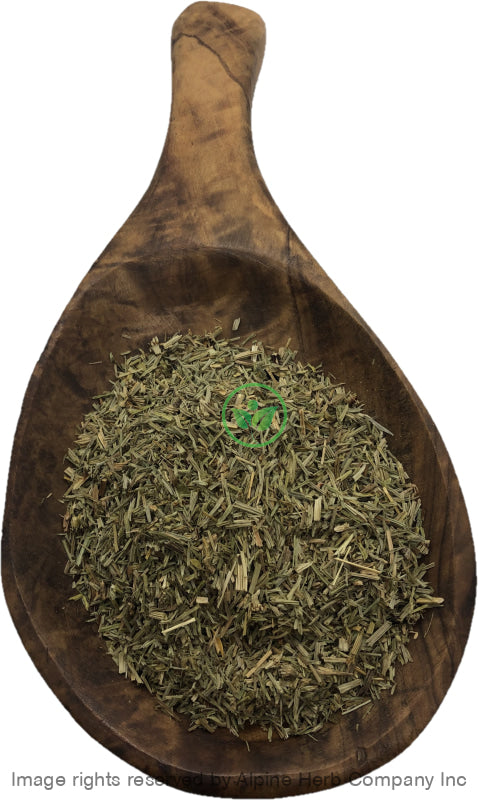Horsetail Cut Alpine Herb Company Inc.
$ 8,49 $ 5,09
Botanical Name: Equisetum arvense
Common Name:
- English: Horsetail
- Also, known as: Shavegrass, Horse pipes, Horsetail, Horsetail grass, Horsetail rush, Horse willow, Hvoshtsh, Jeinsol, Jointed rush, Kannenkraut, Kattestaart, Kilkah asb, Kloelfting, Koniogon, Kosa tiruma, Krypfraken, Librus, Macho, Mare’s tail, Meadow pine, Acker-schachtelhalm, acherschachtelhalm, ager-padderokke, Akersnelle,Akerfräken, Ackerschachtelhalm, Dhanab al khail, Dhanab el khayl, Dhanab et faras, Dutch rushes, Equiseto menor, Equiseto dei boschi, Equiseto dei campi, Equisette, Equisetto, Erva carnuda, False horse-tail, Field horsetail, Foxtail, Akkerpaardestaart, At kuyrugi, Baimbap, At quyroughi, Belcho, Bottlebrush, Brusca, Cauda de cavalo, Chieh hsu ts’ao, Coada calului, Coda cavallina, Coda equine, Cola de caballo, Common horsetail, Corn horsetail, Gongbangcho, Heermoes, Horse-pipe, Moeraspaardestaart, Mokjeok, Moonhyung, Scouring rush, Shvita, Snake grass, Soettgi, Soksae, Sugina, Toadpipe, Tolkatshnik, Tomahwang, Tsukushi, Vara de oro, Wen ching, Western horsetail, Paddockpipes, Peltokorte, Pest’shi, Petite prele, Pewterwort, Pildoochae, Pildooyeup, Pine grass, Pinetop, Polevaja sosenka, Prele, Prele des champs, Poldosi, Queue de cheval, Queue de rat, Queue de renard, Rabo de cavalo, Rasperella, Ravrumpa, Zinngras, Zinnkraut, Bottlebrush
Origin: Ukraine
Harvested: Wild or cultivated
Parts Used: Stems
General Information:
Equisetum arvense, is among the many species of Horsetail, is an herbaceous perennial root-stock and rhizome which can extend to 2 meters below ground. Two kinds of annual stems are produced from this root-stock: fertile and barren. The separate sterile, non-reproductive and fertile spore-bearing stems growing from a perennial underground rhizomatous steam system. The fertile stem appears after the snow thaws. The fertile stems are produced in early spring and are non-photosynthetic, while the green sterile stems start to grow after the fertile stems have wilted and persist through the summer until the first autumn frosts. This pencil-thick fruiting stem is unbranched and grows to a height of around 12-15 cm; it is pale brown to reddish in color. The stems bear a characteristic brownish-colored, terminal cone-shaped catkin containing whorls of the closely packed palate on which the sporophylls are to be found. At the nodes or joints of the stem, the sheaths are to be found which can grow to a length of up to 2 cm and bear between six to twelve blackish-brown teeth or tips. As soon as the fertile stem withers, a pale green, barren frond appears in the same place, which can grow to a height of 40 cm. Unlike the fruiting stem, whorls of four or five-winged side branches arise from the internodes of the barren stem. The barren stem is furrowed and rough on the surface, this roughness is due to deposits of silicic acid inside the stem.
The plant grows in sand and gravel, along roadsides and railway tracks and in wet places. The Indians and Mexicans used the stems for scouring pots; can also be used for polishing hardwood, ivory, and brass. The name “horsetail”, often used for the entire group, arose because the branched species somewhat resemble a horse’s tail.
How to use:
Hot Infusion:
The basic method for dried herbs and flower is, take 2-3 tablespoons of dried herb in a cup or teapot. Pour hot water over it and cover it with lid for 10-30 minutes. Hot water is needed to draw out the antioxidants, enzymes, vitamins, flavonoids, and volatile oils from the botanicals. Strain and squeeze out as much as liquid as possible and enjoy!
Tips:
- You can sweeten your herbal tea with a bit of honey, natural fruit juice, stevia leaves powder and or licorice root powder.
- You can make ice cubes or pops by freezing tea in ice trays or pop molds.
Precautions:
You should consult with a qualified healthcare practitioner before using any herbal products, particularly if you are pregnant, nursing, or on any medications.
All information on this website is for educational purposes ONLY.
This information has not been evaluated by Health Canada.
This information is not intended to diagnose, treat, cure, or prevent any disease.
| Unit Size | 100g, 200g, 400g, 1kg |
|---|
Prompt shipping and expert packing
Thanks to our longstanding association with UPS FedEx DHL as well as other leading global carriers, we can offer a variety shipping options. Our warehouse staff is highly trained and will be able to pack your goods in accordance with our precise and exact specifications. Your items will go through an exhaustive examination before they will be securely packaged before being delivered. We ship to hundreds of thousands of customers daily in different countries. This is a sign of our determination to become the largest online retailer worldwide. Warehouses and distribution centers are located throughout Europe as well as in the USA.
Note that orders containing multiple items are processed according to the particular item.
We will thoroughly inspect all items ordered before shipping. Most orders are shipped within 48 hours. The delivery time will be between 3 and 7 working days.
Returns
The stock market is always changing. It's not entirely managed by us since we're involved with several entities, including the factory and the storage. Therefore, the actual inventory could fluctuate at any moment. Please be aware that it is possible that your order could be out of stock after you've placed your order.
Our policy lasts for 30 days. If it's been more than 30 days since the date you purchased your item We're sorry to say that we can't offer you a full exchange or refund.
You can only return a product if it is unused and still in the same state as when you received it. The item should be in the original packaging.


































